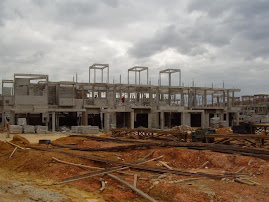24 August 2009
10 August 2009
Brisk Walking Pace
How can you know you are walking at a “brisk” walking pace, the one most recommended by doctors, health experts and walking coaches?
Usually what these advisors mean is to walk at a pace that is sufficient to raise your heart rate to its “training zone” for cardiovascular endurance. And, that varies depending on your age, weight, and current level of fitness. Here are several ways to determine if you are walking at a “brisk” pace:
Target Heart Rate: Your “target heart rate” is defined as 60 to 85% of your maximum heart rate, based on age. Your maximum heart rate is defined as 220 minus your age.
So, for a 40 year old, you would have a maximum heart rate of 220 – 40, which is 180 beats per minute. That’s your maximum. Your “training” or “target” heart rate would be in the range of 60 to 85% of that. So, 60% of 180 is 108 and 85% of 180 is 153. Thus, the target heart rate for a 40 year old ranges from 108 to 153 beats per minute. Which means this 40 year old should aim to reach and sustain that range when walking.
Here’s the formula to calculate your own target heart rate range:
220 minus your age = maximum heart rate (MHR)
MHR times 60% = low end of target heart rate range
MHR times 85% = high end of target heart rate range
You can monitor your heart rate by taking your pulse, or you can buy a heart rate monitor which will do it for you.
Rate of Perceived Exertion Without having a heart rate monitor or stopping to take your pulse, you can use the RPE or Rate of Perceived Exertion scale to determine how hard you are working out. You can find various RPE scales out there, from the original 20-point scale by Gunnar Borg to dozens of variations, including the 10-point modified Borg scale. These scales let you monitor your efforts yourself.
Your “brisk” walking pace would be a level 5 or 6. Level seven would be if you added intervals or wanted to try power walking or race walking. Typically, fitness walking is between a level three and level 6.
Level 1—Very minimal effort. Laying on the couch.
Level 2—Minimal effort. Quite comfortable. Normal daily activies.
Level 3—Moderate effort. Light exercise. Warming up or cooling down.
Level 4—A bit more effort. Might start to sweat. Can sing.
Level 5—Beginning to sweat. Breathing is a bit labored.
Level 6—Working hard. Can not sing. Can talk. Breathing heavily.
Level 7—Intense. Can talk, but not actually carry on much of a conversation.
Level 8—Huffing and puffing. Cannot keep up the pace for more than a few seconds.
Level 9—Very, very hard work. Working so hard you throw up.
Level 10—The absolute maximum you can do.
Talk Test
And, finally, you can simply do the “talk test” to determine if you are walking at a brisk pace. For a brisk pace, you should be able to talk but not able to sing. If you cannot talk, slow down a bit. If you can sing, walk a bit faster or add in some hills
And, there you have three different ways to tell if you are walking at a brisk pace. Aim for 20 minutes of brisk walking at least three times a week (add five minutes before to warm up and five minutes after to cool down) to keep your cardiovascular system healthy.
07 August 2009
Subscribe to:
Posts (Atom)


















